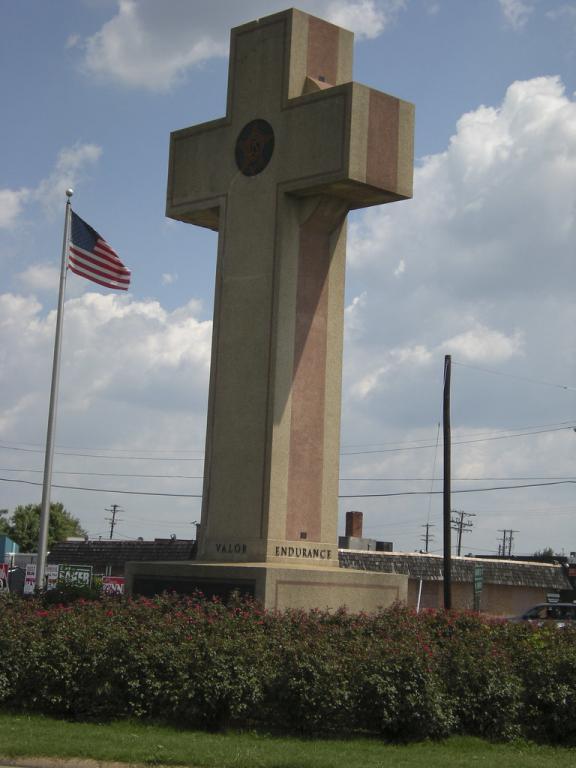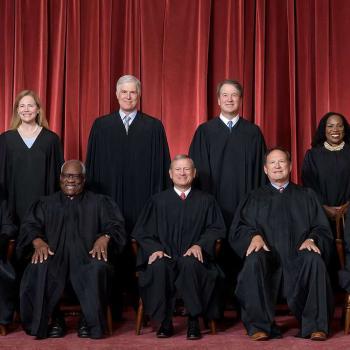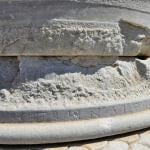The Peace Cross in Bladensburg, Maryland, is a 40-foot cross erected by local residents and the American Legion as a memorial to Americans who died in World War I. Today it stands on a highway median owned by a state commission. The American Humanist Association filed a lawsuit arguing that the cross’s placement on public land amounts to an unconstitutional establishment of religion. A lower court agreed, suggesting that the monument either be moved or its cross arms cut off (!), so that it would be shaped like an obelisk rather than a Christian cross. (Why wouldn’t that be establishing the religion of ancient Egypt?) But the Supreme Court ruled that the cross can stay.
The vote was 7-2, so this decision cannot be attributed, as it surely will be, to the Trump-engineered conservative court. Liberal justices joined in the decision, with only Justices Ruth Bader Ginsburg and Sonia Sotomayor dissenting.
Does this ruling in American Legion v. American Humanist Association mean an end to the lawsuits that seek to exclude religious imagery from the public square? Not necessarily, but it does add some interesting dimensions to how the law will consider such cases.
Currently, courts have followed the “Lemon test,” derived from the 1971 Supreme Court decision in the case Lemon v. Kurtzman,which prevented Pennsylvania from paying part of the salary of teachers in Catholic Schools. According to that decision, any legislation regarding religion must (1) have a secular purpose; (2) neither advance nor inhibit religion; and (3) avoid “excessive government entanglement” with religion.
Though the new justice Neal Gorsuch urged in a concurring opinion that the Lemon test be scrapped as being too vague, the ruling in the Bladensburg Cross case left the Lemon test standing, but applied it in some new ways.
One argument put forward by some defenders of the Peace Cross is that it has a purely secular meaning. But the attempt to “secularize” the Cross is problematic from a Christian point of view. How can a cross symbolize sacrifice unless it refers to Christ’s sacrifice? This decision, though, declined to secularize the cross.
Justice Samuel Alito, who wrote the decision, put it this way:
The fact that the cross is undoubtedly a Christian symbol should not blind one to everything else that the Bladensburg Cross has come to represent: a symbolic resting place for ancestors who never returned home, a place for the community to gather and honor all veterans and their sacrifices for this Nation, and a historical landmark.
So a symbol is recognized as being capable of multiple meanings. This strikes me as an important insight. A church depicted on a small town logo might indeed symbolize Christianity, but it can also be used to symbolize the town’s historical founding by a religious community.
Justice Alito also made the point that getting rid of the Cross at Bladensberg itself would constitute a religious statement, one that violates the principle of government neutrality towards religions:
“For many, destroying or defacing the Cross would not be neutral and would not further the ideals of respect and tolerance embodied in the First Amendment.”
This is in line with other recent Supreme Court decisions that emphasize that religion has a protected status under the Constitution and that the government may not express opposition to its citizens’ religions. Because the Cross is a sacred symbol, not just a secular one, to deface it–as in sawing off the cross beams to turn it into an obelisk–is religiously offensive. And getting rid of all crosses on public land–such as other war memorials and the headstones in military cemeteries–would carry anti-Christian overtones.
However, Alito also wrote that “retaining established, religiously expressive monuments, symbols, and practices is quite different from erecting or adopting new ones. The passage of time gives rise to a strong presumption of constitutionality.” So new monuments would be expected to be in accord with current views of inclusivity. A war memorial to those who died in the Iraq War, for instance, would be expected to include references to the Jews and Muslims, as well as Christians, who died. This part of the decision shows a recognition of history, suggesting that monuments from the past cannot be expected to measure up to modern standards, though new monuments should.
It will surely take more litigation to sort out all of these issues fully. But I suspect that the Bladensburg Cross case will be a significant milestone.
Photo: Bladensburg Peace Cross by Ken Firestone, Creative Commons License 2.0.













